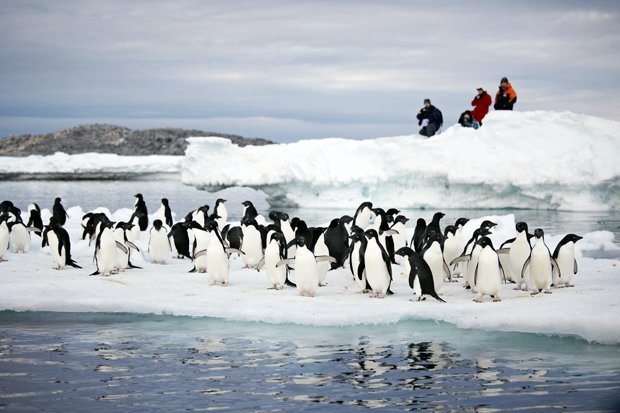Antarctica: penguin haven

AG designer Mike Rossi set sail on the AG Society expedition to Antarctica and saw thousands of penguins.
PENGUINS ARE THE WORLD’S only true seabird, spending the majority of their lives in the sea, and coming ashore only to moult, breed and nest. They are swift and graceful in the water, using powerful flippers, webbed feet and streamlined bodies for propulsion and feeding mainly on krill, small fish and cephalopods. On land, they are awkward, waddling upright on their webbed feet and exhibiting many anthropomorphic qualities that make them so endearing.
They are generally social birds (with the exception of the solitary yellow-eyed penguin), gathering in large colonies, or rookeries, to breed and nest – the largest known colony is one of a staggering 2.5 to 3 million pairs of Macaroni penguins (Eudyptes chrysolophus) on South Georgia Island in the South Atlantic.
The inquisitive and comical Adélie penguins (Pygoscelis adeliae) were plentiful in Commonwealth Bay, nesting amongst the rocks near to Mawson’s hut. Emperor penguins, the largest of the penguin family, have been spotted sporadically from the ship, resting on drifting ice floes in East Antarctica.
On Macquarie Island, summer home to millions of penguins, I walked amongst throngs of slender Kings (Aptenodytes patagonicus) and the endemic, curious Royals (Eudyptes schlegeli) at Sandy Bay.
Also on Macquarie Island, we’ve spotted smaller numbers of Gentoos (Pygoscelis papua), with their seemingly lip-sticked bills, and Rockhoppers (Eudyptes chrysocome), with their bright yellow Mohawk crests and who nest on inaccessible, rocky slopes.
On New Zealand’s sub-Antarctic islands I cross paths with several forest-nesting Yellow-eyed penguins (Megadyptes antipodes) on Enderby Island, and at the Snares Island, I enjoy the spectacle of hundreds of endemic Snares crested penguins (Eudyptes robustus) entering and exiting the water on a giant, rocky penguin slide.
There is no shortage of penguins in this part of the world!
RELATED STORIES



